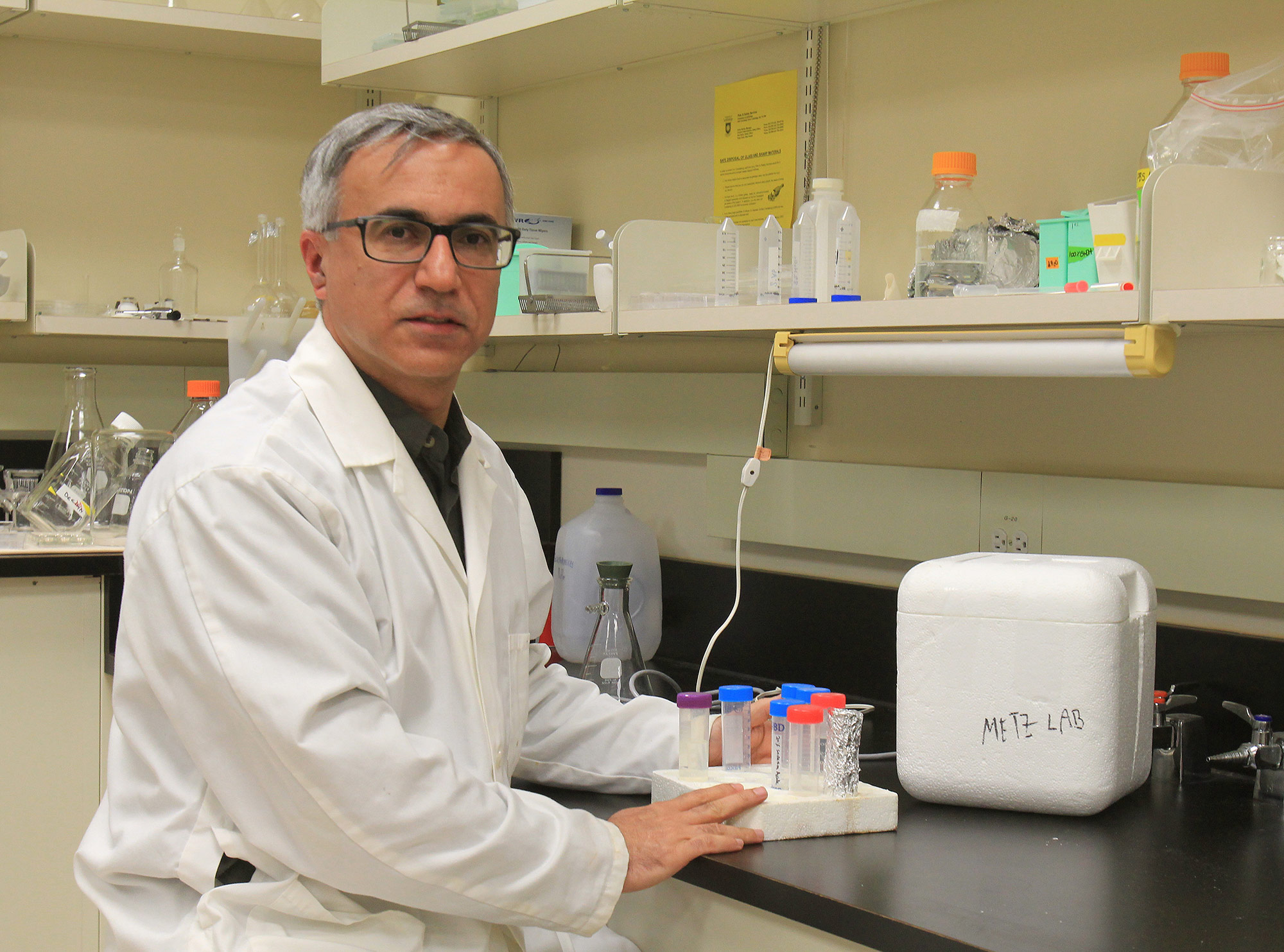In the past, many scientific research studies focused on using only male subjects, whether in human or animal experiments. Now researchers like Drs. Jamshid Faraji and Gerlinde Metz at the University of Lethbridge’s Canadian Centre for Behavioural Neuroscience are shining a spotlight on biological sex differences and making them an integral part of their research.
“It’s a big issue,” says Faraji. “Researchers and scientists have to consider males and females, particularly in relation to stress. The results could be misleading if we don’t consider the psychological differences between males and females.”

While fever is typically produced as a result of infection, a condition in humans called psychogenic hyperthermia results in increased body temperature due to chronic stress. The condition affects more females than males and often occurs in adolescence.
“Young females are known to experience high raises in temperature in response to stress,” says Metz. “Their core body temperature can go up to 41 degrees. There’s not a good animal model and, if you want to understand the mechanisms, it’s helpful to see if this also works in animals. This study is the first observation of psychogenic regulation of temperature in mice. No one has shown that before.”
Faraji and Metz found that the skin temperature of female rats was significantly higher than in male rats when they experienced a specific kind of stress.
The researchers subjected male and female mice to two types of stress. In one condition, mice were individually placed into transparent Plexiglas tubes that kept them standing still in a vertical position. In the other, the mice were placed in a white plastic tube that mimicked the natural burrow of a mouse. The tunnel allowed the mice to freely move and turn around, but prevented them from standing on their hind limbs. Mice engage in rearing behaviour, or standing on their hind limbs, to explore and investigate their environment. Before the mice experienced any stress, the researchers monitored the rearing behaviour of the mice during free exploration and found that females reared more often than males during active hours.

Following both stress conditions, the researchers took blood samples to measure levels of stress hormones.
“While we expected differences, both males and females showed the same flight or fight response to being deprived of some of their natural physical activity,” says Faraji.
The researchers then went a step further and used an infrared thermal imaging camera that detects changes in skin temperature. That’s where the differences showed up.
“Our results showed significant differences between males and females only when they were deprived of rearing behaviour,” says Faraji. “Female mice showed an increase in temperature while males did not. This shows that males and females respond differently to certain kinds of stress.”
Having established an animal model allows researchers to do further work on exploring the thermal regulation systems in males and females, which could one day lead to a better understanding of the same mechanisms in humans.
For Metz, the experiment has parallels to the current restrictions placed on movement because of the COVID-19 pandemic.
“Having their movements curtailed is stressful for mice and humans, too,” says Metz. “Being largely confined to our houses during the lockdown and, even though we can still physically move about, may be experienced as stressful.”
In response to such prolonged stress, people often develop psychosomatic symptoms or mental health issues like depression and anxiety. Health authorities around the world have responded by increasing supports for mental health treatment.
“This study is a great example of how the brain can control our body functions,” says Metz. “The brain is the master gland and it can direct many physical responses to our environment and to our experiences. It shows how much the mindset determines general health and symptoms. We have to look at the whole body in terms of well-being.”
